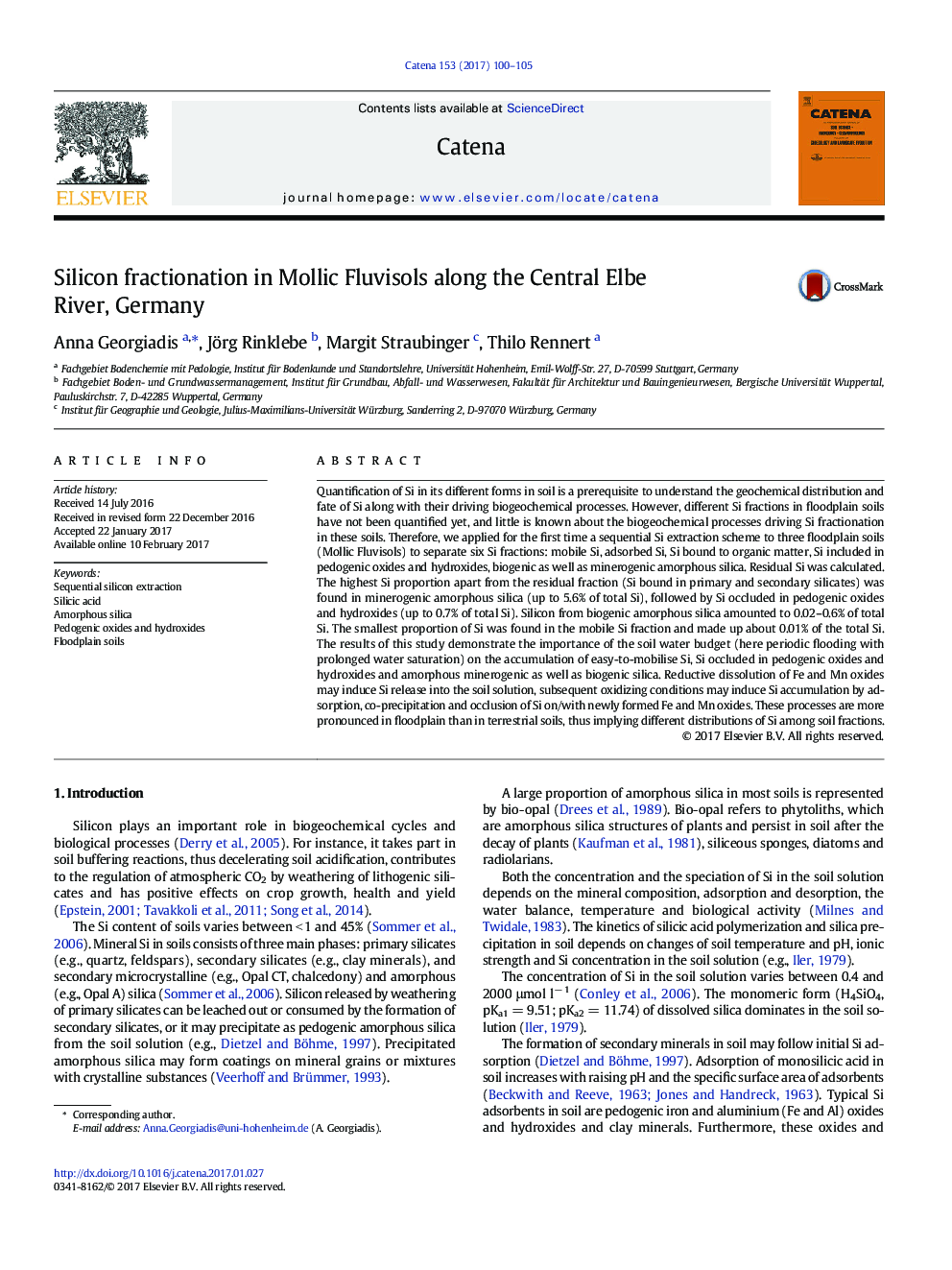| کد مقاله | کد نشریه | سال انتشار | مقاله انگلیسی | نسخه تمام متن |
|---|---|---|---|---|
| 5770154 | 1629201 | 2017 | 6 صفحه PDF | دانلود رایگان |

- A sequential Si extraction scheme applied to floodplain soils for the first time.
- Redox cycles affect Si fractionation.
- Fe and Mn oxides are important pools for Si retention/release in floodplain soils.
Quantification of Si in its different forms in soil is a prerequisite to understand the geochemical distribution and fate of Si along with their driving biogeochemical processes. However, different Si fractions in floodplain soils have not been quantified yet, and little is known about the biogeochemical processes driving Si fractionation in these soils. Therefore, we applied for the first time a sequential Si extraction scheme to three floodplain soils (Mollic Fluvisols) to separate six Si fractions: mobile Si, adsorbed Si, Si bound to organic matter, Si included in pedogenic oxides and hydroxides, biogenic as well as minerogenic amorphous silica. Residual Si was calculated. The highest Si proportion apart from the residual fraction (Si bound in primary and secondary silicates) was found in minerogenic amorphous silica (up to 5.6% of total Si), followed by Si occluded in pedogenic oxides and hydroxides (up to 0.7% of total Si). Silicon from biogenic amorphous silica amounted to 0.02-0.6% of total Si. The smallest proportion of Si was found in the mobile Si fraction and made up about 0.01% of the total Si. The results of this study demonstrate the importance of the soil water budget (here periodic flooding with prolonged water saturation) on the accumulation of easy-to-mobilise Si, Si occluded in pedogenic oxides and hydroxides and amorphous minerogenic as well as biogenic silica. Reductive dissolution of Fe and Mn oxides may induce Si release into the soil solution, subsequent oxidizing conditions may induce Si accumulation by adsorption, co-precipitation and occlusion of Si on/with newly formed Fe and Mn oxides. These processes are more pronounced in floodplain than in terrestrial soils, thus implying different distributions of Si among soil fractions.
Journal: CATENA - Volume 153, June 2017, Pages 100-105